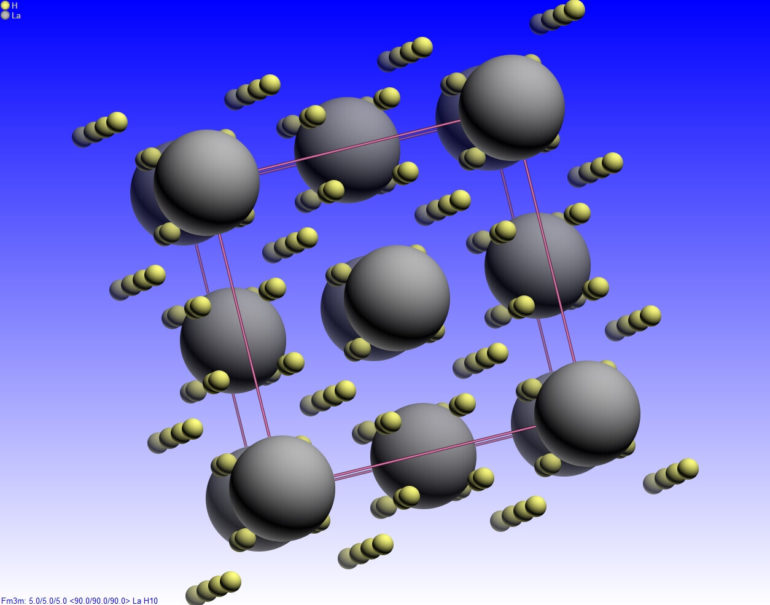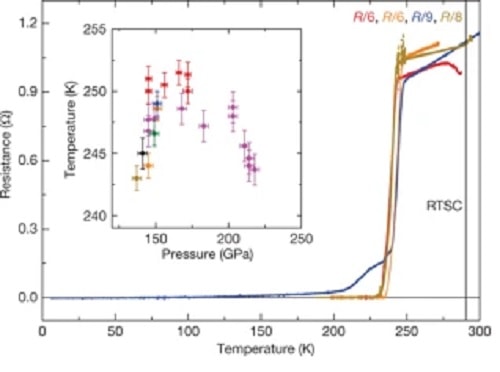Discovered in 1911 by the Dutch physicist Heike Kamerlingh Onnes, superconductivity is an active field of research in physics of condensed matter. Characterized by a zero resistivity and the expulsion of a magnetic field (Meissner effect) below their critical temperature, superconductors open the way to revolutionary applications in many fields. Recently, physicists have been able to observe the phenomenon at a higher temperature than ever before.
German scientists have taken a new step in superconductivity: observe the phenomenon the highest temperature ever reached, only -23 C. The work was directed by Mikhail Eremets, physicist Max Planck Institute of Chemistry, which had established the record high temperature precedence for superconductivity in 2014, -70 C. The results were published in the journal Nature.
The superconductivity ambient temperature, higher than 0 C, is a true Grail for physicists. If that could be done, it would revolutionize the efficiency and performance of electrical systems, by dramatically improving electrical networks, high-speed data transfer and electric motors, to name just a few examples.
Eremets and his team reached the record high-temperature superconductivity precedent using hydrogen sulphide under 150 gigapascals of pressure (the Earth’s core is between 330 and 360 gigapascals). Sulfur hydrogen is a material so light that it can vibrate at high speeds, which means higher temperatures, but such pressure is needed to prevent it from breaking up when vibrating.
Superconductivity -23 C: a new temperature record thanks to lanthanum hydride
This new research used a different material, called lanthanum hydride, subjected to a pressure of about 170 gigapascals. Earlier this year, the team announced that it had achieved superconductivity with this material -58.15 C and now, a few months later, it has improved this result.
Electrical resistance versus temperature chart showing the -23C superconductivity phenomenon for lanthanum hydride. Credits: A. P. Drozdov et al. 2019
This jump of 50 C from the record-breaking critical temperature of -70.15 C, indicates the potential for superconductivity at ambient temperatures in the near future, the researchers write.




